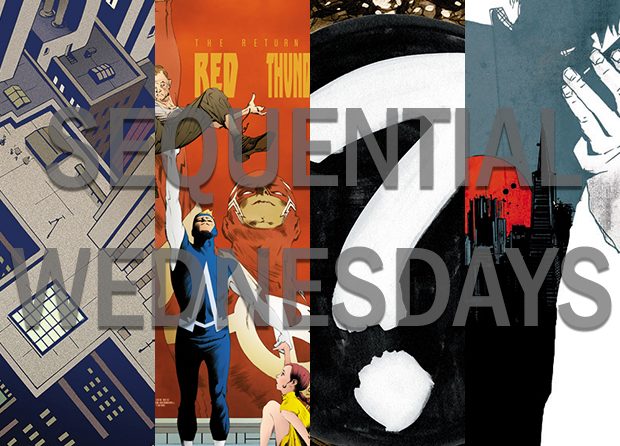Previously, in parts 1 and 2, I talked about collectors whose ambition, in collecting, was to have every one in set (“completists”) and those who had to have every one they wanted, however much it costs. Those two strategies may be satisfying, but there are easier ways to collect, ones that can be just as satisfying and (potentially) less costly.
For Love and Not for Money
Some of us can remember ordering Arkham House books by mail order. Established initially to venerate the works of H. P. Lovecraft, the two founders August Derleth and Donald Wandrei published their first book in 1939: Lovecraft’s The Outsider and Others. Arkham House would go on to publish dozens of books that are iconic in the field of weird fantasy fiction. By the 1950s, and taking their lead from AH’s success, several other small independent publishing houses came into existence. Typically coming out in small editions of 500, and costing all of $4.00 even in the 1960s, these books might take a decade or more to sell out – but you could subscribe by mail order to get them all, as they were published. Ray Bradbury’s first published book, Dark Carnival (for example) published 1947 in an edition of 3000 by AH originally sold for $3.00 – and now will cost you about $2500. in near fine dustjacket. Gnome Press’s Conan books in the 1950s were $2.50-$3.50 each, now you can have all seven in the set for around $1000.
So what about the hundreds all the other books she also bought, by authors she loved, including HUGO award winners like Connie Willis, and that Doubleday Book Club membership that she loyally maintained for years? Hmmm. For the most part they remain good reads but as for being “collectible”? Eh, not so much. Even most of the Arkhams can be gotten today for relatively little. But does that really matter? The point was to buy books you loved, which may or may not have included a copy of Neal Stephenson’s Snow Crash (Bantam Book Club Edition, 1992) which you then took the trouble to have signed by Stephenson. 🙂
What is Love?
I know a collector who started out with beer cans, went on to Underground comic art, then science fiction art, and now has one of the finest personal collections of American
illustration and illustrated books in the world. Another collector I know started with Disneyana, then switched to fountain pens, then toy robots, then pulp art. He also loves his
collection of Japanese “famous monsters and characters” plastic model kits. These have yet to appreciate in value the way his Mickey Mouse, robots, and “Spicy”
detective cover paintings did, but he has always said he collects for love, and not for money. Can it really be “true” love when you keep falling . . . again, and again? And is love really “blind”? Well . . .
There are collectors who form and re-form collections – going from one interest to another. Call them eclectic, or simply opportunistic. And there are other collectors who stick to one theme/category of item all their lives….whether it’s napkin rings, salt and pepper shakers, sewing machines or SF/F illustration art. What unites these two groups however is simple:
THEY DO NOT BUY BECAUSE THEY THINK WHAT THEY ARE BUYING IS GOING TO BE WORTH MORE…SOME DAY.
And YET . . . All collectors, however much in love, must also be shrewd – see my blog #1. These collectors may SEEM to be buying based on love alone, but they are NOT indiscriminate about they fall in love with 🙂 Maybe you bought books from FPCI, Shasta, Gnome, Arkham . . . and maybe you didn’t. The point is: all things being equal, and given the equal opportunity to buy the hardcover, regular first edition of a book or a later book club edition of the same book, and you can afford to do buy either one – which did you choose to buy? Life is full of options. The easiest example for me to give on how those options, and those choices, play out is to use MYSELF as an example, and ART as the vehicle.
ALL OF ME, WHY NOT TAKE ALL OF ME . . .
That’s what happened when we fell in love with John Berkey’s (1932 – 2008) art. He was not an unknown when we fell – and after we had our fill of his space ships we discovered we loved just about everything he did, because he brought his own, inimitable style and sensibility as an illustrator to everything he painted. So, we already had bought several pieces from him when, in 2001, we told him we wanted a few more. In reply, he said (to every one we chose) “that one is $1000.” So we bought several from him, among them the following four . . . all for $1000. each.

Then there came a time when we decided that 20 Berkey paintings were perhaps a few more than we really needed. So we put those four paintings up for auction… CAN YOU GUESS THE RESULTS? Well, you don’t have to (these auction records are a matter of public record, and you can find them on the Heritage Auction website under archives).
One of the four (all amounts including premium) went for $597.50 (about half of what we paid for it). One went for $1553.50, another for $3,107. And the last one, for $19,120. WHICH ones sold for WHAT?



Would you be able to guess – without looking them up?? I’m betting NO. 🙁 Any more than we could have known! We just let our eyes and heart make the decision.
Sure, you can get lucky and be fortunate and discover one day that the world has come around to agreeing with your tastes. But the idea that some objects SHOULD, or are DESTINED to go up in value – and that this is good and reasonable motive for buying those sorts of objects….like some sort of bond or stock….is crazy thinking. Do not believe any collectibles dealer who tells you that what they are selling you is a “sure thing,” a “good investment” or that it will “appreciate in value.”
Art and books are not “liquid” assets like gold coins; you can’t wake up one day needing cash, and sell them the same morning. The idea that you can outsmart the market, that you can ‘get a jump’ on what will be ‘hot’ next year (c.f. Harry Potter), that you can buy, sell and trade your way into riches by buying certain categories of objects (books, antiques, art, coins, fishing lures or duck decoys) is tempting. But terribly foolish. How many BOOKS are like Rowling’s first in the Potter series, Philosopher’s Stone, that will go from £10.99 to £7,000 in 15 years? Ask any publisher: thousands of books are published every year and sink like stones – barely making a ripple in the literary landscape.
What’s the secret? EDUCATE YOUR NOSE AND THEN FOLLOW IT
Watch Antiques Road show and you’ll see not only how rarity and condition affects the price of collectibles, but also how the seemingly casual expression of taste (the ring given as an anniversary gift; the silver inherited from a relative; the art purchased while traveling abroad; the garage sale vase that you didn’t need, but purchased anyway) can in time be worth so much more. Time also means “trends” and prices can move up and down with those trends in collecting.
Which thought brings me neatly around to the next, and also popular, collecting strategy – that’s not for the faint of heart! Stay tuned for Part 4 next week!











Enjoying your articles Jane. I think your overall point about pricing and predicting future demand is spot on.
I suspect your Berkey example was also clearly demonstrating one of the other problems which affects price. The number of collectors with money to spend at any given time can be quite limited. When large numbers of works come onto the market in a short period of time, they are effectively competing for a fixed pot of money.
I don't think this affects the relative pricing for an artists work within a single auction – the painting achieving the highest and the painting achieving the lowest price will probably still be the same. But it certainly does affect the absolute dollar value of those highs and lows.
This sometimes becomes really obvious when a single painting ends up returning back to auction multiple times over a short time frame. The prices achieved at subsequent auctions by a single painting can vary wildly.
My uncle made a fortune trading collectibles. For example, he started buying up civil war stuff in the 1950s, foreseeing that it would become more valuable during the centennial. He was right.
A few years ago (he's in his 90s now), he gave me what I think is very good advice about collectibles. He'd made most of his money in collectible coins and especially currency. He said: "Never bother buying anything that's not in mint condition."
Point being: you had to look up the results to verify what your instincts told you. AFTER you had been told the price spread. I'm not saying this is bad (it shows your tastes were in sync with the market) and there's good news, too (you now know who John Berkey is ;-)) but at the same time, it also shows how hard it is to price art. . . as well as know what price to pay for it. It's easy to have 20-20 hindsight. What is harder, is to predict which paintings will "soar" and which will "sink" – and all too often, artists don't make those determinations any easier. They value their art in different ways than collectors; how long it took them to paint it; how difficult the job; their emotional attachment to the subject matter; etc.
Yes, exactly. For me at the moment, it comes down to a simple calculation of "how many hours at what fee" and currently I try to achieve, theoretically, minimum wages when putting a price on a painting. Simple as that. Some of my paintings – the ones from the "Earthsea" series, especially – took several weeks to do, and the market, especially here in NZ, does not support an adequate price for them at the moment. I've decided to stick with it anyway, rather than slog them off for some ridiculously small amount of money, in the hopes that in a few (or who knows how many) year's time, I'll be able to sell the originals at that price. This is also another reason why I've decided to make and sell prints, rather than the original paintings! — As well as being another reason why I am currently concentrating on digital work *intended* for print, rather than "originals" created in traditiional media.
Meanwhile, I can educate myself about the market…. 🙂
… so in a manner of speaking, I've become a collector of my own works.
(yes, I have been accused of narcissism before) 😉
Welllll — not being familiar with this man's work, I did get one of them right…. (the one that sold for least) 🙂